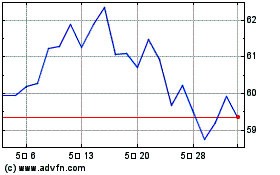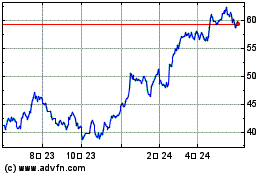- Ninety percent of Americans report that they are still
surprised by high prices of items like water, gas, eating out and
attending events
- Fifty-five percent saying they have delayed some of their life
plans to navigate economic conditions over the past year
- Eighty-three percent want to learn new ways of thinking about
money and dealing with their money
Seventy-six percent of Americans are cutting back on spending,
up from 67% in 2024, according to findings from the second annual
Wells Fargo Money Study.
This press release features multimedia. View
the full release here:
https://www.businesswire.com/news/home/20250225157049/en/
Wells Fargo Money Study (Graphic: Wells
Fargo)
For adults in the first half of their financial lives, these
numbers are even higher, with 82% of Gen Z adults and 79% of
Millennials cutting back. And while not as high, it’s also of note
that the youngest populations in the study are adapting to the
current economic conditions with 60% of teens also reporting that
they’re reducing their spending. In keeping with this theme, 60% of
Americans say they are making tough financial choices to navigate
their lives. Nearly as many (55%) said that those tough choices may
involve delaying some life plans. Among those delaying life plans,
a majority cite delayed travel more than anything else (74%),
followed by home renovations (39%), relocation (30%), and buying a
home (30%). One in six (17%) have delayed education plans, one in
seven (14%) have delayed getting married, and one in eight (13%)
have delayed retiring.
Investment and Insurance
Products:
Not FDIC Insured
No Bank Guarantee
May Lose Value
“Consumer behaviors are shifting. The value of the dollar and
what it is providing may not be as predictable anymore, which seems
to be more pronounced for younger Americans,” said Michael Liersch,
head of Advice and Planning at Wells Fargo. “There is a clear
social narrative surrounding the question: ‘do I, and will I, have
enough?’ The fact that these questions are being asked is positive
because we know the earlier that people focus on their spending,
saving, and investing behaviors, the more time they have to course
correct to achieve their financial goals.”
At the forefront, consumers continue to navigate higher than
expected prices
Nearly all those surveyed (90%) responded they feel “sticker
shock” in one or more areas of common spending, including eating
out, attending a concert, buying a bottle of water, or downloading
a video game, and say actual costs are between 55% and 200% higher
than what they expect.
Sticker Shock in Six Areas of Consumer
Spending
% Shocked
Expected Cost
Actual Cost
How Much Higher than
Expected
Eating out or food delivery
76%
$23
$40
74%
A tank of gas
63%
$40
$62
55%
Concert or sporting event tickets
39%
$70
$150
114%
A bottle of water
36%
$1
$3
200%
A greeting or birthday card
24%
$3
$6
100%
A video game download or streaming
service
21%
$20
$50
150%
“Spending is one of the most important factors to staying on
track with your goals,” says Liersch. “I would encourage people to
continue to evaluate their financial choices and align their
spending with what matters most to them. Life happens and making
incremental progress toward a goal and adjusting timelines along
the way – including setbacks – are all a part of the process.
Staying focused on what we want to accomplish can get us through
the twists and turns of our financial journey.”
Nearly all Americans (94%) acknowledge that they want to do just
that: align money choices with their values. And almost as many
(86%) want to be more intentional and thoughtful about their
spending.
According to Liersch, “these insights highlight that Americans
are not just winging it. They are being extraordinarily
introspective and thoughtful as they navigate their financial
priorities and work toward achieving their financial goals.”
Americans say they don’t judge others’ financial
circumstances, but they do judge themselves
Americans overwhelmingly say they believe the amount of money
their friends or family members have doesn’t matter. Almost nine
out of 10 (87%) say it makes no difference to them how much money
another person has, and nearly as many (82%) say their friends
include people of different levels of wealth.
Yet more than half (56%) keep secret how much they have, with a
third of them (32%) saying it’s because they are trying to avoid
people judging them. Regardless of whether they keep money secrets
or not, more than half of respondents (53%) say people knowing how
much money they have would create stress.
Reasons People Keep Money
Secrets
Money is a private topic for me
65%
So that people do not judge me
32%
The truth might result in people asking
for money
30%
The truth might change how others see
me
27%
The truth might change my interactions
with people and what we do together
24%
A substantial number of those surveyed also spend time thinking
about how much money other people have – and wishing they could
have more themselves. Almost half (47%) responded they often feel
envious of how much money other people have, and nearly as many
(45%) often compare their financial situation to others. More than
one in three (37%) admit to obsessing about getting rich, a third
(34%) admire social media millionaires, and about one in four (23%)
admit to sometimes overspending just to keep up with people around
them.
“Americans appear comfortable with other people being authentic
about their financial situation, which is encouraging to see,”
Liersch says. “So now it’s time to look inwardly and overcome our
own self-judgment. Let’s challenge ourselves with the following
question: how can we lower focus on others and define financial
success on our own terms? Resetting the frame of reference from
others to our own personal benchmark may help us better spend time
and energy on our best next step.”
Americans have clear financial goals, and want help to
overcome challenges
Eighty-six percent of respondents say they have a clear picture
of what they want their money to do for them. And the vast majority
are optimistic about how to do it: 87% say now is a good time to
save and 65% say now is a good time to invest. Yet nearly
two-thirds say they need a mental reset (61%), and the following
factors are holding them back:
- Habits are not easy to change (48%)
- They focus on today rather than tomorrow (43%)
- They do not know enough about money and finance (32%)
- They have a lot of others relying on them financially
(29%)
- They feel social and peer pressure (15%)
To overcome these challenges in making progress to their goals,
Americans are seeking more financial advice year over year. Last
year, 24% said they were seeking more advice from others; this year
it’s 36%. Looking across generations, the desire for more advice is
higher with teens (54%), Gen Z adults (61%) and Millennials
(46%).
“Younger generations are innovating and leading the way in so
many areas. In this case they are leading in the desire to learn
more about money and make informed financial decisions. And
Americans are saying: Now is the time,” said Liersch.
About Wells Fargo
Wells Fargo & Company (NYSE: WFC) is a leading financial
services company that has approximately $1.9 trillion in assets. We
provide a diversified set of banking, investment and mortgage
products and services, as well as consumer and commercial finance,
through our four reportable operating segments: Consumer Banking
and Lending, Commercial Banking, Corporate and Investment Banking,
and Wealth & Investment Management. Wells Fargo ranked No. 34
on Fortune’s 2024 rankings of America’s largest corporations. In
the communities we serve, the company focuses its social impact on
building a sustainable, inclusive future for all by supporting
housing affordability, small business growth, financial health, and
a low-carbon economy. News, insights, and perspectives from Wells
Fargo are also available at Wells Fargo Stories.
Additional information may be found at www.wellsfargo.com
LinkedIn: https://www.linkedin.com/company/wellsfargo
Wells Fargo Bank, N.A., is a bank affiliate of Wells Fargo &
Company.
Investment products and services are offered Wells Fargo
Advisors, a trade name used by Wells Fargo Clearing Services, LLC,
and Wells Fargo Advisors Financial Network, LLC, Members SIPC,
separate registered broker-dealers and non-bank affiliates of Wells
Fargo & Company.
About the Study
On behalf of Wells Fargo, Versta Research conducted a national
survey of 3,657 U.S. adults and 203 U.S. teens age 14 to 17.
Sampling was stratified, and data were weighted by age, gender,
race, ethnicity, income, and education to achieve accurate
representation of the current population based on estimates from
the U.S. Census Bureau. The survey was conducted from September 5
to October 4, 2024. Assuming no sample bias, the maximum margin of
error for full-sample estimates is ±2%. Unless noted otherwise,
findings are based on the sample of adults, with data from teens
reported separately.
Cautionary Statement about Forward-Looking Statements
This news release contains forward-looking statements about our
future financial performance and business. Because forward-looking
statements are based on our current expectations and assumptions
regarding the future, they are subject to inherent risks and
uncertainties. Do not unduly rely on forward-looking statements as
actual results could differ materially from expectations.
Forward-looking statements speak only as of the date made, and we
do not undertake to update them to reflect changes or events that
occur after that date. For information about factors that could
cause actual results to differ materially from our expectations,
refer to our reports filed with the Securities and Exchange
Commission, including the discussion under “Risk Factors” in our
Annual Report on Form 10-K for the year ended December 31, 2022, as
filed with the Securities and Exchange Commission and available on
its website at www.sec.gov.
News Release Category: WF-ERS
View source
version on businesswire.com: https://www.businesswire.com/news/home/20250225157049/en/
Vince Scanlon 336-430-9786 Vince.scanlon@wellsfargo.com
Wells Fargo (NYSE:WFC)
과거 데이터 주식 차트
부터 1월(1) 2025 으로 2월(2) 2025

Wells Fargo (NYSE:WFC)
과거 데이터 주식 차트
부터 2월(2) 2024 으로 2월(2) 2025
